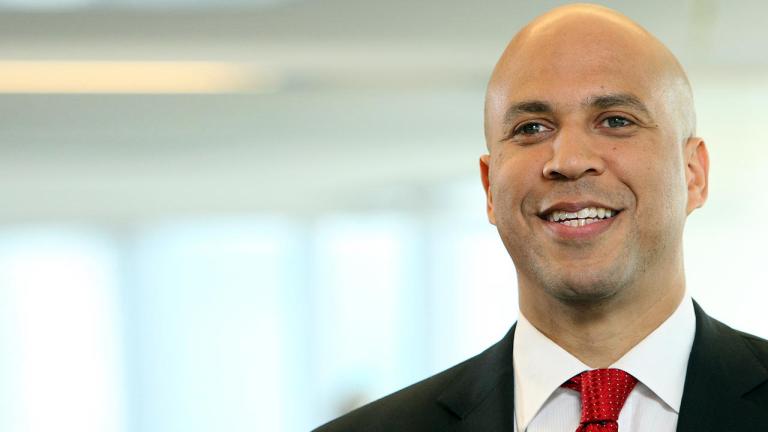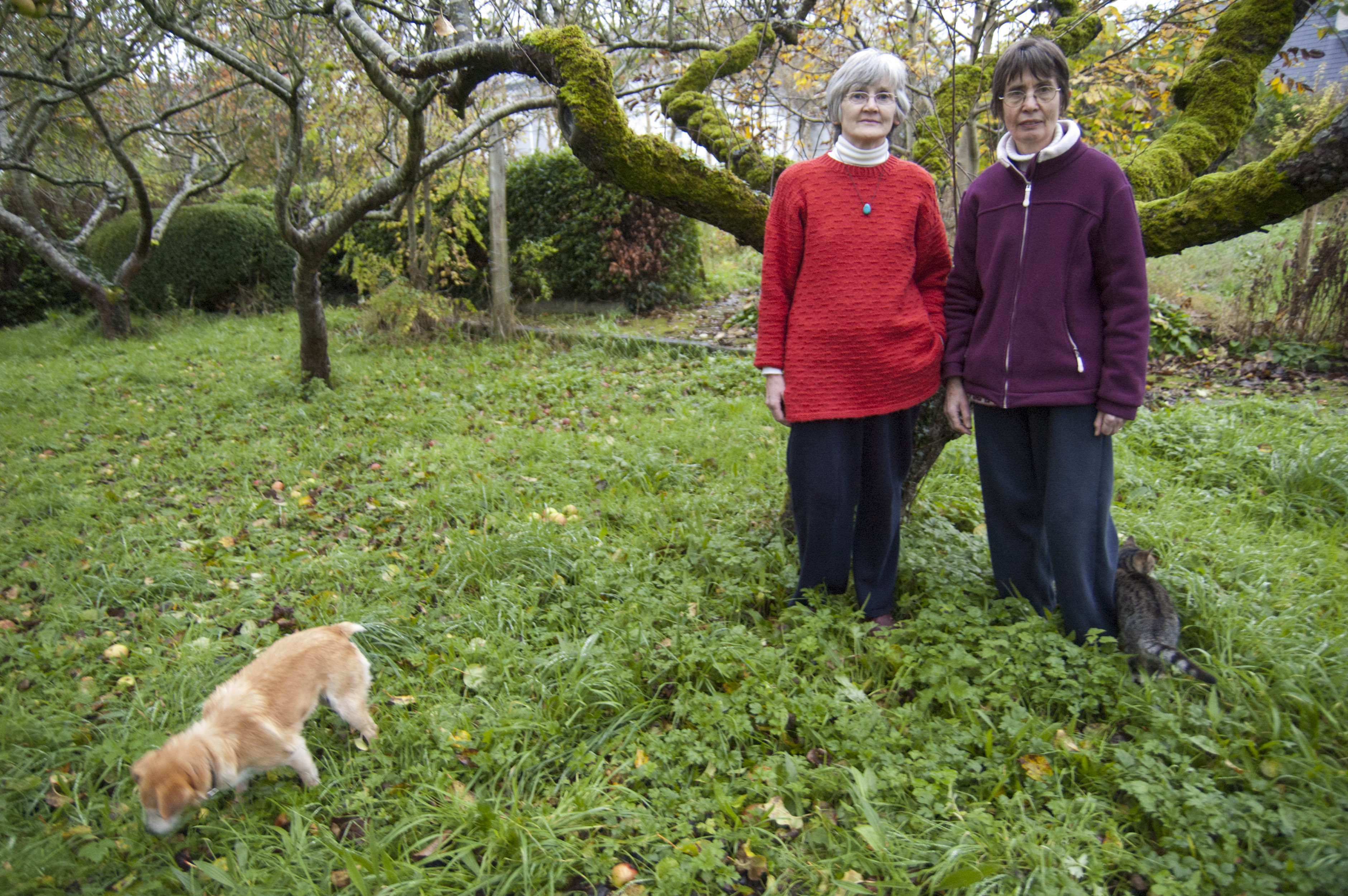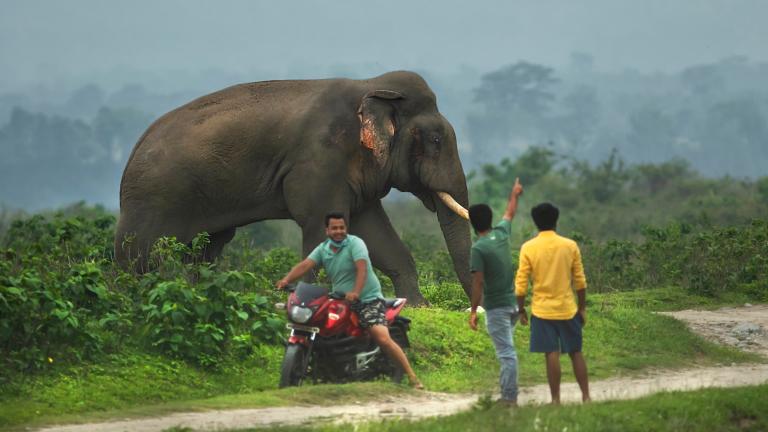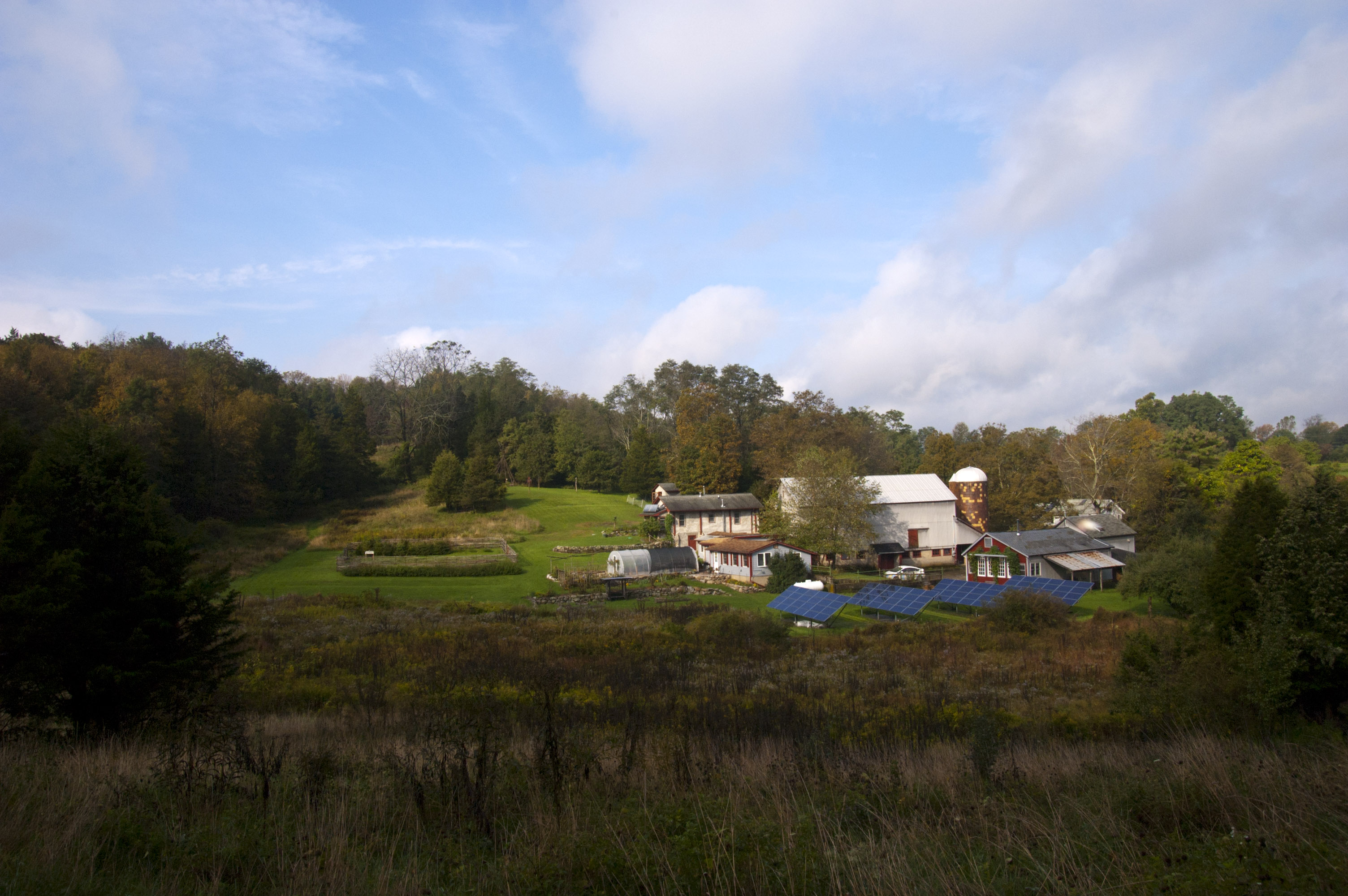
Angela EvancieGenesis Farm, in Blairstown, N.J.
Every woman in this story is confoundingly non-descript. Short hair, often grey. Conservative dress. Unmarried; soft-spoken. Most are well into their 70s, and all will tell you that their way of life is dying out. They will also tell you, with surprising conviction, that the world is in peril.
They are Roman Catholic sisters, from a variety of orders — Dominican, Mercy, Passionist — but don’t think Whoopie Goldberg or a young Sally Field. While many of their aged peers are living out their days in quiet convents, these women are digging gardens and offsetting carbon. They’re as well-versed in solar and geothermal technology as they are in the Gospels of Luke and John, and some wear Carhartts and work boots like they’re habits. At the heart of the women’s action is a belief that the changing climate and world demand a new kind of vocation — that Ave Marias won’t cut it anymore, but maybe clean energy will. Called Green Sisters, or Sisters of Earth, they are pushing the bounds of their tradition toward a new, and deeply spiritual, kind of environmentalism.
“The Judeo-Christian tradition is so beautiful, and it has such wisdom, but it doesn’t have a lot to say about fracking,” Miriam MacGillis, a Dominican sister in her mid-70s, told me. We were eating lunch at Genesis Farm, an earth literacy center in Blairstown, N.J., that MacGillis founded in 1980. Our mesclun mix and roasted squash came from fields just across the road where, in 1982, MacGillis launched one of the first community supported agriculture programs in the country. “There’s some wisdom in the Scriptures, like how you treat your neighbor, and being kind and compassionate,” she continued. “But they took for granted that the earth was there to be their resource.” In this regard, MacGillis is part of a growing movement of Christians assessing the applicability of biblical teachings to the climate movement, though some — like evangelical environmentalists — see in the Bible not a disregard for the planet, but a direct mandate for protecting it. Nearby, MacGillis’ Prius sat parked behind her small straw-bale home, which is in turn set behind a much larger solar array.
There were other hybrid vehicles on the premises. Earlier that day, the leadership team from Slow Foods USA had caravanned from their New York offices to Blairstown to hold their annual retreat. They were a young group — not one of them looked older than 35 — and of a generation for which devotion to a life of prayer is about as likely a career option as becoming a chimney sweep or milkman. During a tour of the kitchen gardens, orchards and fields, Josh Viertel, then the organization’s president, told me he had been surprised to learn that Genesis Farm was run by a Roman Catholic sister. “I thought it was far out,” he said. “Most of the people I know doing work like this are opposed to things like organized religion.”
But nuns — women religious, as they call themselves — have been doing work like this for a while. Consider the Sisters of the Immaculate Heart of Mary of Monroe, Mich., who, in 2000, renovated their 370,000-square-foot motherhouse for LEED certification. On their 280-acre campus, they introduced a three-acre wetland to recycle grey water and established what was, at the time, one of the largest geothermal fields in the country. The IHM sisters spent $56 million, calling energy efficiency a “spiritual and moral mandate for the 21st century” and part of a “renewed vision for bringing about the dream of God on earth.”
In 1994, when a small group of Mercy Sisters from the Confert Diocese in Ireland’s County Galway set out to establish an organic garden and ecology center, the diocese opposed the center, asking the women to take their project elsewhere. But the leadership eventually capitulated. “It was a clash between the old world and the new world,” Sister Noreen Lyons said on the last morning of my stay, during which she and Sister Anne Mills had distributed countless scones and pots of tea to students in gardening, building and forestry classes led by visiting experts. The center is called An Gáirdín (Irish for “the garden); it runs its classes, mostly for locals, behind the site of the former Rural Domestic School, where Mercy sisters lived and held similar courses for women for over 100 years. Today, the large brick building is an apartment complex. An Gáirdín’s organic gardens and unassuming outbuildings — and its own geothermal system, the second in Ireland — sit behind the building’s parking lot.
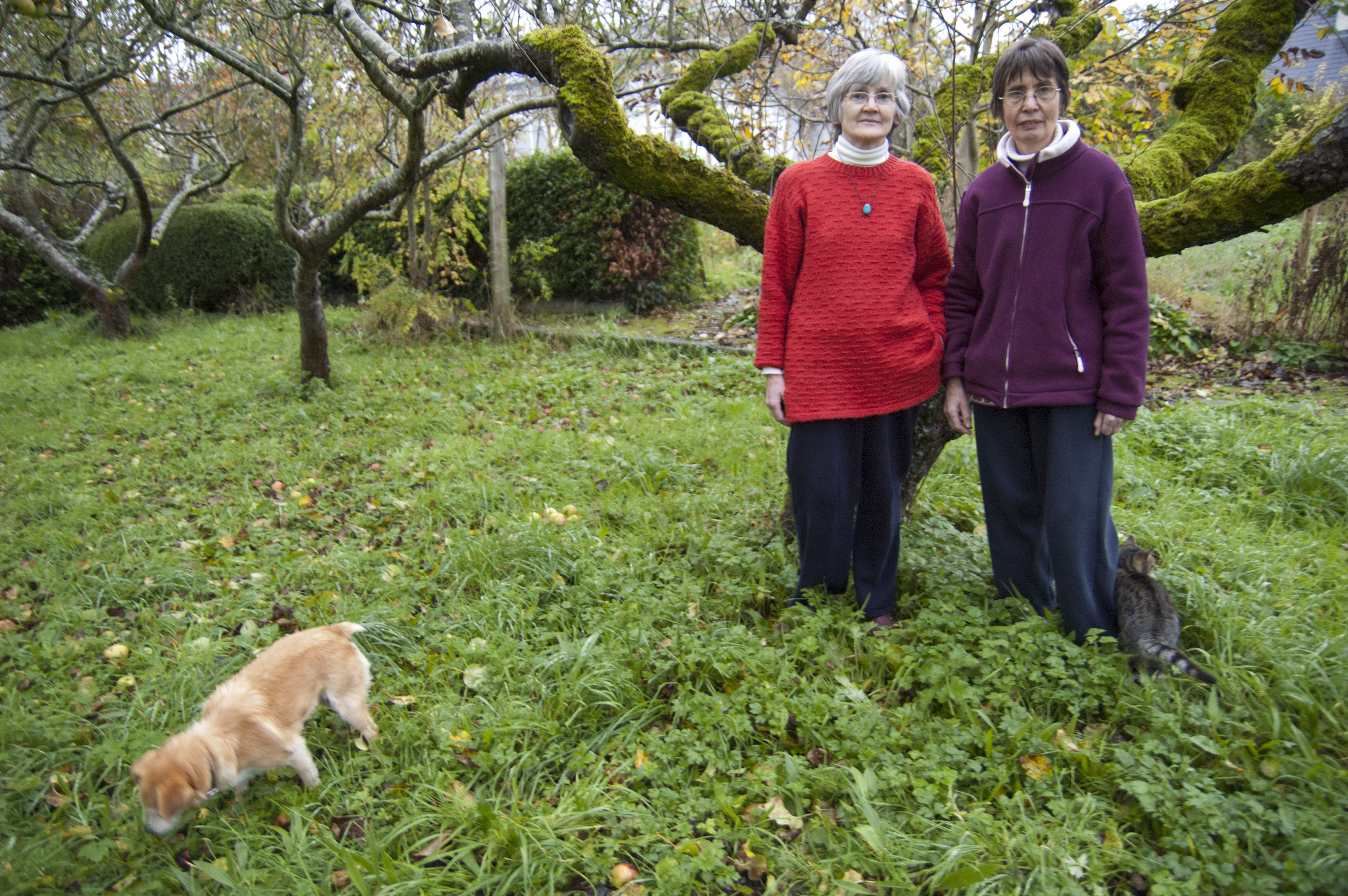
Angela EvancieSisters Noreen Lyons and Anne Mills.
It comes as no surprise that Catholic sisters have been among the leaders in the ongoing, if fractured, environmentalist movement. Catholic sisters have a long history of hands-on progressivism in the form of both protest (civil rights, Vietnam, nuclear energy) and humanitarianism (establishing schools, fighting poverty). In Green Sisters: A Spiritual Ecology, Sarah McFarland Taylor traces sisters’ activism back to the 17th century, when the Sisters of St. Joseph in Le Puy, France “administered hospitals, taught children, and provided houses of refuge for the poor.” In the United States, sisters routinely tended to patients in disease-ridden and disaster-stricken new cities; in Civil War field hospitals, they stayed with soldiers when bombardments caused other medics to flee. When asked how people responded to the IHM motherhouse renovation, Sister Janet Ryan told the NBC Today Show, “They think we’re mad. But they’ve always thought we were mad, so what’s the difference, right?”
The way Sister Gail Worcelo talks about it, sisters are almost like first-responders. “Religious communities come into existence because of a cultural or political or historical urgency,” she says. “Sisters have addressed urgencies for education, or for a reconstitution of a life of prayer. And in our time, we see the urgency — the urgency is planetary.” In 2005, Worcelo and Sister Bernadette Bostwick founded the Green Mountain Monastery, a wood-heated farmhouse and unheated yurt on 160 acres of balsam forest in northern Vermont. They were joined by Sister Amie Hendani, from Jakarta, last year. The women give retreats (upcoming: Monastic School of Collective Emergence), grow their own vegetables and travel to lecture on the way in which the Catholic tradition is moving into its planetary, or cosmological, phase.
This last part, and the inspiration for the Green Mountain Monastery (as well as for Genesis Farm, and, in one way or another, for the dozens of female-led spirituality farms and eco-justice centers across the country and on every continent) came, perhaps ironically, from a man. His name was Thomas Berry, and he was a Passionist priest, cultural historian, and self-proclaimed “geologian,” a historian of the earth. Worcelo and Bostwick first met him in 1984, when he came to lecture at St. Gabriel’s Monastery in Pennsylvania, where they were novitiates. He told the community that it was time to respond to the planetary crisis, Worcelo recalls, and begin to think of humanity as intricately connected to the natural world. “We go into the future as a single, sacred community,” he said, “or we’ll perish on the way.”
His message was unlike any other circulating in the Church at that time, and predated much of the secular, scientific writing that would later ignite the climate movement. For the next 25 years, until his death in 2009 (he is buried at the Green Mountain Monastery), Berry expanded upon his thesis, writing, most notably, The Great Work: Our Way into the Future. In it, he distills a sweeping survey of religious, economic, and cultural history into a call for change. Berry himself was inspired by a predecessor: the Jesuit Priest Pierre Teilhard de Chardin, who wrote, in 1901, “The true summons of the cosmos is a call consciously to share in the great work that goes on within it; it is not by drifting down the current of things that we shall be united with their one, single soul, but by fighting our way, with them, toward some goal still to come.”
Though Berry’s works are grounded in a sense of the sacred, they’re also deeply scientific, and a far cry from the Holy Scriptures — none so far as The Universe Story, which Berry wrote with the physicist Brian Swimme in 1992. The book charts the 15-billion-year history of the mysteriously perfect chain of events that led from the “Primordial Flaring Forth” (i.e. the Big Bang) to the Great Adventure (i.e. evolution) of life on earth to the development of human consciousness and cultures. The Church also recognizes this history; it condones theistic evolution, or evolutionary creationism, which holds that theology and modern science are not incompatible. And yet The Universe Story is striking because while it considers the historical impacts of Christianity, there is no Christian God involved in its account of creation. The book closes with an explanation of our newest geologic era, the Ecozoic Era, which requires a “mutually enhancing human presence upon the Earth.” Shaped by science, reverence, and a sense of urgency, The Universe Story reads like a cross between Richard Dawkins, Jared Diamond, and Al Gore. It’s also mind-muddling to the last sentence: “When the curvature of the universe, the curvature of the Earth, and the curvature of the human are once more in their proper relation, then Earth will have arrived at the celebratory experience that is the fulfillment of earthy existence.”
Despite — or perhaps because of — its heady genre bending, The Universe Story resonates strongly with women religious. (Many refer to the Universe Story as though it is a worldview unto itself; it is also called the New Story, or the Earth Story.) “Many of them [sisters] have an innate sense of the natural world as revelatory of the divine,” says Mary Evelyn Tucker, a senior lecturer at Yale and co-founder and co-director of the Yale Forum on Religion and Ecology. (Tucker and Swimme have rendered the Universe Story for a popular audience with The Journey of the Universe, a book, DVD, and lecture series.) “Many of them have come out of farm communities and grew up close to the land, so this is very natural to them … It’s in their spiritual life, it’s in their ritual life, it’s in their sacramental life. And it’s very innate in many of them to be inspired by, as Teilhard de Chardin would call it, the hymn of the universe, the divine milieu.”
“I think one of the things that I heard deeply was that the human is the being in whom the earth has become conscious of itself,” MacGillis recalls of her first encounter with Berry and the Universe Story, in 1977. “And something just broke open in me. It’s funny, because I don’t think I’ve ever thought or spoken about it,” she continued. “But all my life, I had this memory of Hackettstown, this place where I grew up in the woods. And my relationship with dogs, and animals … I always felt like there was something strange about me. I was unusual — none of my friends were that way, or my family. So I always wondered, was I a little wacko, you know? And hearing Thomas Berry speak helped me say no, actually. It just flooded me with some sort of affirmation.”
Sometimes, it can seem like the emphasis in “Sisters of Earth” falls more heavily on the word “Earth” than it does on “Sister.” Some of the women I met eschew Mass for more earth-based rituals like solstice or equinox celebrations; one sister told me she found conventional Catholic ceremonies “very difficult. Because they are in forms that are constrained by this literal, historic interpretation … that I find extremely dangerous and so counterproductive. So I try to stay away from that. Because it’s too upsetting.” Another called the leadership of the Catholic faith community “clueless.” And then there’s the women’s immersion in and promotion of the Universe Story, hardly a sanctified doctrine. Some have faced discipline — or the threat of discipline — from the male leadership in their dioceses; others are simply ignored.
At An Tairseach, a Dominican convent-turned-ecology center in Ireland’s County Wicklow, four sisters run a 10-week intensive seminar centered on the Universe Story. Women and men from a variety of orders and missions around the world attend; they hold Mass in striking natural settings, walk a labyrinth laid out on the floor of the chapel, and share meals made with veggies harvested from the sister’s farm up the hill. Apart from challenging students’ assumptions about the earth and cosmos, the goal of the program, says An Tairseach’s director Sister Marian O’Sullivan, is to build a “basic foundation for spirituality that could give students the energy to care for the earth which they don’t get by just getting the bad news.” Sisters have been dealing in good news since the beginning of the Christian tradition — perhaps the Universe Story is a new kind of Gospel. “You could be depressed at the state of the world,” says O’Sullivan. “And we’d rather give [students] an energy to say, ‘I can do something. And I will do something. I know the problems, and I know they’re huge, but each person can do something.’ So that’s how it works.”
One morning, the group gathered for a lecture on the history of women in the Church. Mary T. Malone, a visiting scholar, raced through 2,000 years’ worth of this history, touching on episodes where women religious challenged, unbalanced, or strongly influenced the otherwise male-led Church. These began, according to Malone, with the women who were followers of Christ (“Mary Magdalene, as far as I’m concerned, was the founder of Christianity”) and continued through to the “explosion of feminism” and women in ministries in the 1960s and ’70s. But the greatest upset, Malone said, was caused by the women mystics of the medieval era. Women like Hildegard von Bingen and Marguerite Porete rejected the notion of original sin, and claimed direct experience of God by simply being alive. (The former was excommunicated; the latter burned at the stake.)
The women mystics’ understanding of the sacred was also strikingly similar to that put forth by the Universe Story. “They were the only ones,” Malone said, “to base their thought and writings on the first creation story, the story of original grace. Until fairly recently, when the ecologists and cosmologists got in on the act, and began to think about the whole of creation and interconnectedness.” The kind of progressive theology taking hold today may have a precedent in the women mystics, Mary Evelyn Tucker says, but it didn’t originate with them. “The mystics didn’t have access to the scientific stories of the universe unfolding,” Tucker told me. “Understanding that we’re part of a 14 billion year unfolding process expands, hugely, our understanding of the divine.” Still, the circumstances of recent developments seem to serve a comparable need. “It happens to women in the history of Christianity that when theology gets too conservative, if you want to use that word, something gives,” Malone said, shielding her eyes from a beam of light that had slid into the room. “Women’s spiritual needs explode, and all they have to go on are their own resources.”
When I asked Sister Miriam MacGillis why, despite her changing spirituality, she hadn’t left the Church entirely, she responded, “I am the Church … And Christianity as a way of being conscious isn’t finished. What does Christianity do when it looks through the Hubble telescope? … I can’t leave, it’s who I am. But I’m it, evolving. And that’s faith to me. That’s faithfulness. It’s not easy, but it’s how I make sense of it.” For Marian O’Sullivan, the price of leaving the Church would be the loss of her community. “You either walk away, and you have no community of faith. Or you stay, and you do the best you can.” She continued, “Community is central to the universe. You know? Attraction of matter to matter, gravity, all that. That’s how things get drawn together. And central to humanity as well — we’re all connected, we’re all one, we’re all interdependent.”
Reporting for this story was made possible by support from a Middlebury Fellowship in Environmental Journalism.
 This story first appeared on the Atlantic as part of the Climate Desk collaboration.
This story first appeared on the Atlantic as part of the Climate Desk collaboration.
